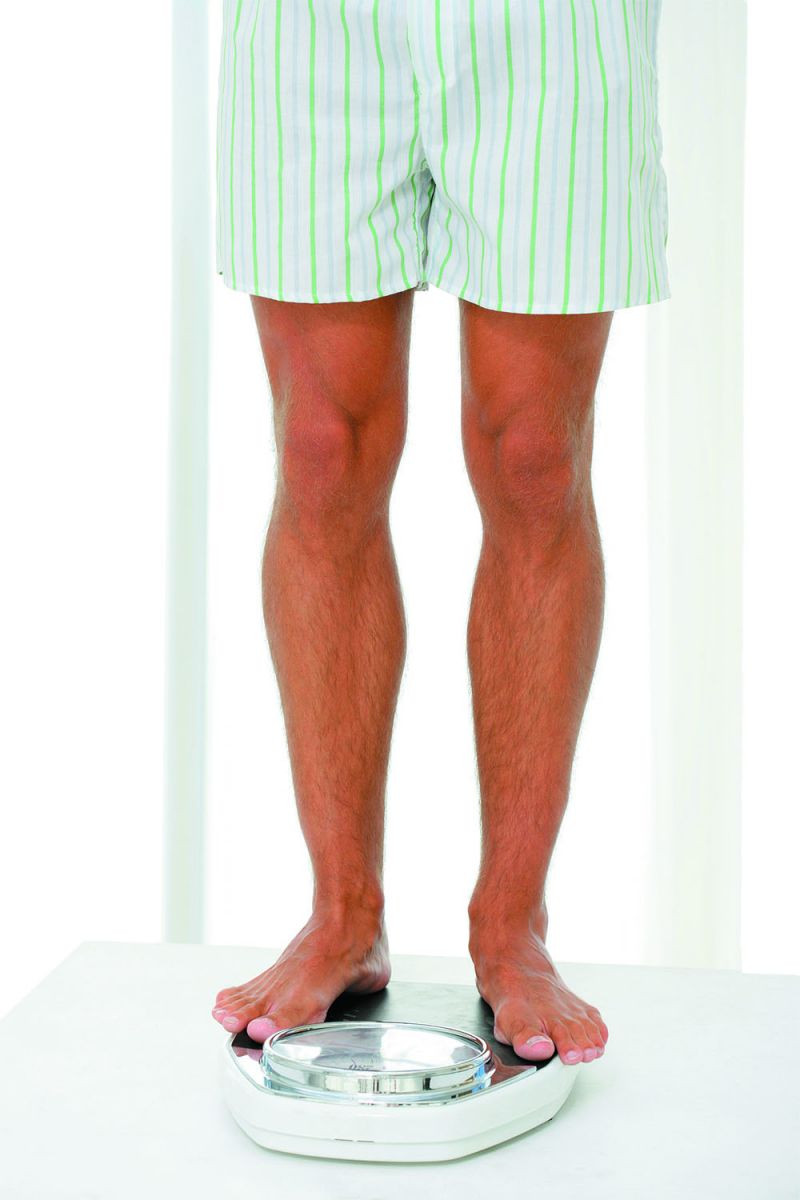Overweight vs overfat: Is your scale lying to you?
You may be storing unhealthy amounts of visceral fat even if your weight appears normal.
 For decades, the body mass index (BMI) has been the gold standard for gauging obesity-related heart disease risk. But this handy tool doesn't always tell the whole story. It extrapolates your body fat percentage based on your height and weight (see /bmi-calculator). But the formula can't assess how or where your body stores its excess fat — a distinction that is crucial for cardiovascular health. By some estimates, the BMI misclassifies nearly 50% of people who are at higher disease risk from excess fat, meaning that you can be overfat even when you're not overweight.
For decades, the body mass index (BMI) has been the gold standard for gauging obesity-related heart disease risk. But this handy tool doesn't always tell the whole story. It extrapolates your body fat percentage based on your height and weight (see /bmi-calculator). But the formula can't assess how or where your body stores its excess fat — a distinction that is crucial for cardiovascular health. By some estimates, the BMI misclassifies nearly 50% of people who are at higher disease risk from excess fat, meaning that you can be overfat even when you're not overweight.
The secret life of belly fat
Some people are genetically programmed to have a lot of fat tissue under the skin, which is deployed to store extra food energy during times of scarcity. But other people have very few of these designated fat cells, explains Dr. Christos Mantzoros, professor of medicine at Harvard-affiliated Beth Israel Deaconess Medical Center.
In individuals who lack an adequate quota of available fat storage cells (or people whose fat tissue is already filled to capacity), fat particles travel in the bloodstream and congregate in the liver, muscles, and other organs, which normally have no fat. This also leads to the accumulation of visceral or "belly" fat — a pattern of fat distribution that is particularly hazardous to your health (see "Who is prone to visceral fat?"). Visceral fat is associated with insulin resistance and other metabolic irregularities. "It also triggers the release of inflammatory substances that damage the arteries and help set the stage for cardiovascular disease," says Dr. Mantzoros.
Who is prone to visceral fat?The tendency to accumulate visceral fat is governed by genetic, ethnic, and gender differences. For example, people who inherit two copies (one from each parent) of a mutation in a gene involved in fat metabolism are more likely to have higher amounts of visceral fat than people with just one copy. Those without any copies of the gene mutation are less likely to develop heart disease — even if they become obese. Natives of India and South Asia have a higher-than-average propensity for abdominal obesity. And white men and black women tend to accumulate more visceral fat than black men and white women. |
Fat and aging
With age, people tend to lose muscle tissue, especially the type of specialized muscle fibers that produce quick bursts of speed and power. Fat frequently accumulates within the remaining muscle tissue, causing your body fat percentage to increase even when your weight remains constant. This scenario is closely linked to bodywide inflammation and diabetes risk. It may also explain why your BMI measurement doesn't provide a true reflection of your health risks.
Evidence suggests that waist circumference and waist-to-hip ratio are better indicators of metabolic health than BMI. Even among people with the same BMI, those who have a large waist (defined as more than 40 inches for men and 35 inches for women) have a significantly higher risk. In addition, people who tend to carry their weight in their hips and thighs (a "pear" shape) have lower waist-to-hip ratios and are less prone to heart disease than people with abdominal obesity (an "apple" shape); see "Measuring your midsection."
Measuring your midsectionTo measure your waist accurately, exhale and wrap a measuring tape around your bare abdomen just above your navel (belly button). Don't suck in your gut or pull the tape tight enough to squeeze the area. To compute your waist-to-hip ratio, first measure your hips by putting the tape measure around the widest part of your buttocks. Keep the tape measure level. Then, divide your waist size by your hip size. |
||
|
Measurements that signal high risk |
Waist (inches) |
Waist-to-hip ratio |
|
Women |
35 or more |
0.9 or more |
|
Men |
40 or more |
1.0 or more |
What should you do about visceral fat?
People with abdominal obesity — even if they're not overweight — can lessen their heart disease risk with regular exercise and healthy eating habits. "Reducing the total amount of fat in your body frees up storage space for fat particles in places that are associated with less metabolic risk," says Dr. Mantzoros. That's why losing as little as 7% of your total weight helps lower heart disease risk: the most dangerous visceral fat disappears first.
Image: © Goodshoot/Thinkstock
Disclaimer:
As a service to our readers, Harvard Health Publishing provides access to our library of archived content. Please note the date of last review or update on all articles.
No content on this site, regardless of date, should ever be used as a substitute for direct medical advice from your doctor or other qualified clinician.















